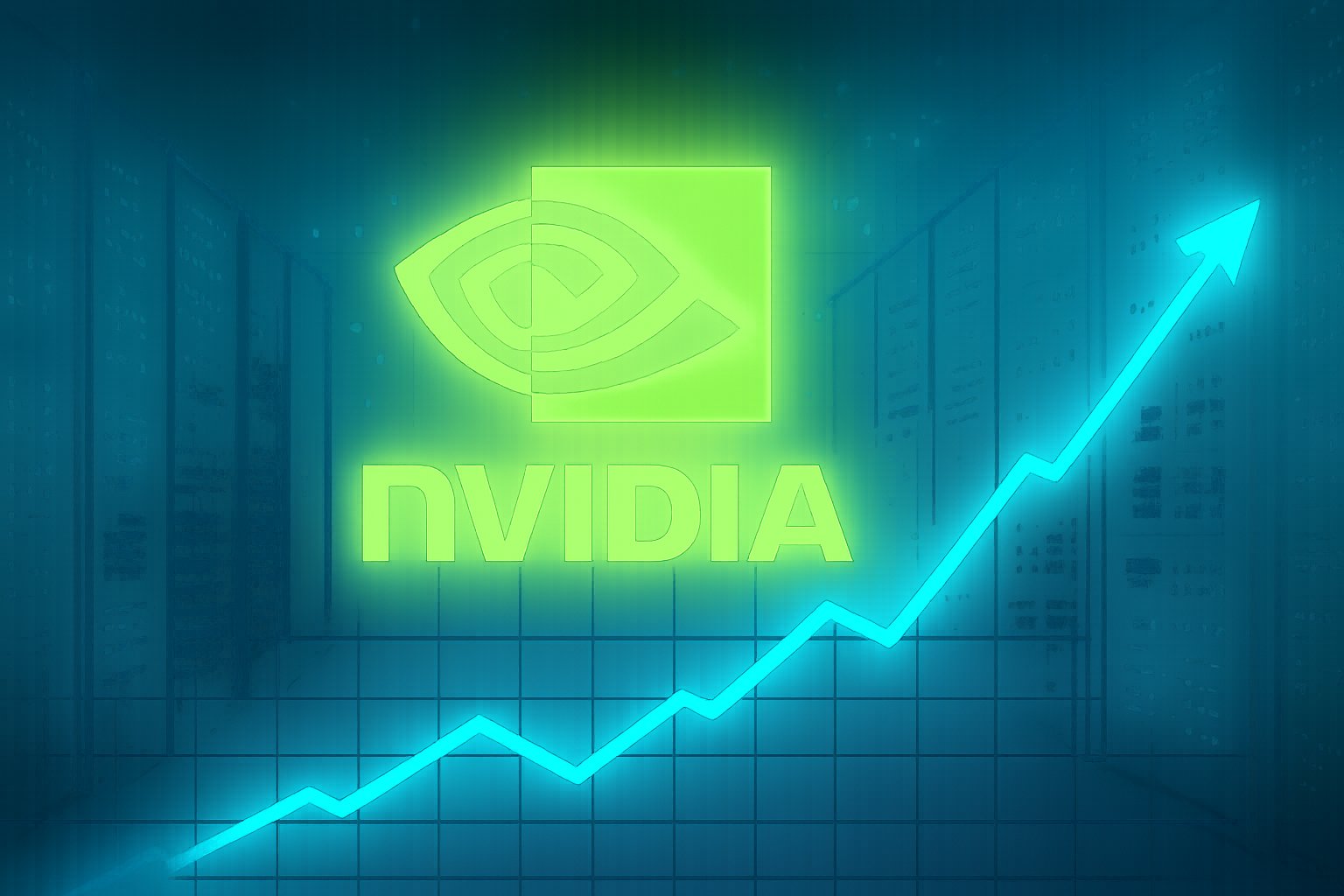
AI CERTS
23 minutes ago
Nvidia earnings outperformance drives record $57B quarter
Record Quarter Details Unpacked
Management delivered a headline $57.006 billion top line, confirming the widely cited $57.01B revenue beat. Furthermore, GAAP and non-GAAP earnings landed at $1.30 EPS, eclipsing consensus forecasts. Revenue rose 22% sequentially and 62% year over year, underscoring historic momentum. Jensen Huang framed the period as a “virtuous cycle of AI.”

The company returned $37 billion to shareholders during the first nine months while maintaining $62.2 billion in buyback capacity. Additionally, GAAP gross margin reached 73.4%, reflecting exceptional pricing leverage on Blackwell GPUs.
- $57.01B revenue beat: 22% QoQ growth
- $1.30 EPS: both GAAP and non-GAAP
- Gross margin: 73.4% GAAP
- Capital returned: $37 billion YTD
The blockbuster figures anchor this Nvidia earnings outperformance. These numbers confirm demand breadth. However, concentration risks linger.
This overview highlights the headline metrics. Consequently, readers can now focus on the segment fueling the surge.
Data Center Dominance Continues
The engine behind revenue is clear. Data-center sales hit $51.215 billion, marking data center $51B growth 66% YoY. Additionally, the segment climbed 25% quarter over quarter. Blackwell GPUs, NVLink interconnects, and networking kits drove hyperscaler orders.
In contrast, gaming and professional visualization contributed modestly. Nevertheless, the data-center mix now tops 90% of total sales. Such reliance amplifies exposure to a handful of cloud buyers. Reuters noted that four customers represented roughly 61% of revenue, prompting valuation debates.
Management countered skepticism by citing record MLPerf benchmark wins and multi-year supply commitments with OpenAI, Microsoft, and Google. Moreover, early Rubin CPX sampling suggests another upgrade wave in 2026.
Data-center leadership solidifies this Nvidia earnings outperformance. Yet reliance on power-hungry AI clusters may constrain future capacity. Therefore, investors must track infrastructure bottlenecks.
The segment’s strength sets growth expectations. Subsequently, attention shifts to forward guidance.
Guidance Signals Ongoing Momentum
Executives projected $65B Q4 guidance, plus or minus two percent. Furthermore, the outlook implies nearly 14% sequential growth on an already massive base. CFO Colette Kress said visibility rests on contracted hyperscaler demand through early 2026.
Additionally, management expects gross margins to remain in the mid-70s despite rising supply costs. However, export restrictions to China remain a wildcard, though current guidance assumes limited near-term impact.
Analysts from UBS and Bank of America labeled the print a “clearing event” that validates AI-infrastructure budgets. Meanwhile, some strategists warned that energy constraints could slow deployments even if chips remain scarce.
This ambitious forecast extends the narrative of Nvidia earnings outperformance. The figure reinforces investor confidence. Nevertheless, sustained growth will require balanced supply chains.
Guidance boosts sentiment today. Next, we examine how markets interpreted the news and lingering risks.
Market Reaction And Risks
Shares rallied 5% in after-hours trading. Moreover, call-option volume spiked as traders priced in further upside. Business Insider flagged relief that the feared “AI bubble” did not burst.
Nevertheless, valuation concerns persist. The stock trades at premium multiples that assume durable growth. In contrast, Reuters highlighted customer concentration and potential energy shortages at large data centers.
Furthermore, geopolitical risks loom. Export controls limit certain GPUs in China, forcing SKU adjustments that could trim margins. Consequently, any regulatory tightening could dampen upcoming quarters.
Despite risks, the current quarter showcased Nvidia earnings outperformance. Investors embraced near-term momentum. However, the debate about sustainability continues.
Market sentiment sets a volatile backdrop. Subsequently, product strategy sheds light on competitive positioning.
Strategic Product Advantages
NVIDIA’s moat rests on hardware-software integration. CUDA, NVLink, and Spectrum networking create switching costs competitors struggle to match. Moreover, Blackwell Ultra and upcoming Rubin CPX aim to stretch performance leadership.
Additionally, MLPerf results validated training and inference superiority. SemiAnalysis noted that Blackwell cut model training times by 40% versus prior generations. Consequently, hyperscalers committed to multi-year capacity reservations.
The company also unveiled NVQLink, promising 3.2 Tbps inter-GPU bandwidth. Furthermore, BlueField-4 DPUs address data-plane bottlenecks and free CPU cycles for orchestration.
These technical wins reinforce Nvidia earnings outperformance. Product cadence supports growth. Yet AMD and Intel roadmap updates bear watching.
Product leadership explains demand patterns. Therefore, leadership decisions around capital allocation are equally important.
Leadership And Capital Allocation
Jensen Huang’s vision shapes strategic priorities. Meanwhile, disciplined buybacks return surplus cash without starving R&D. The company spent $37 billion on share repurchases and dividends over nine months.
Moreover, management maintains $62.2 billion of authorized repurchases, providing flexibility if volatility emerges. In contrast, capital expenditure remains elevated to secure advanced packaging capacity at TSMC.
This balanced financial policy strengthens the narrative of Nvidia earnings outperformance. Investors view the blend of growth and returns favorably.
Capital strategy rounds out operational highlights. Consequently, professionals may seek skills to leverage the AI boom.
Professional Upskilling Opportunities
The AI hardware surge fuels demand for executive talent. Professionals can enhance their expertise with the Chief AI Officer™ certification. Additionally, leaders versed in applied AI strategy remain scarce.
Furthermore, hyperscalers seek managers who understand supply constraints, model deployment, and cost optimization. Therefore, continuous education offers a competitive edge.
These career insights align with Nvidia earnings outperformance. Market growth translates into leadership opportunities. Consequently, forward-looking professionals should invest in targeted credentials.
Upskilling supports market readiness. The article now concludes with core takeaways.
Conclusion And Outlook
NVIDIA delivered a profound Nvidia earnings outperformance marked by the $57.01B revenue beat and robust $1.30 EPS. Furthermore, management issued bullish $65B Q4 guidance amid data center $51B growth 66% YoY. Market optimism reflects technical leadership, but risks from concentration, energy, and geopolitics persist.
Nevertheless, demand for AI infrastructure shows no immediate fatigue. Consequently, industry professionals should monitor supply dynamics and pursue credentials like the linked Chief AI Officer™ program to stay ahead.
Explore additional insights, refine your strategy, and position yourself for the next wave of AI-driven growth.



